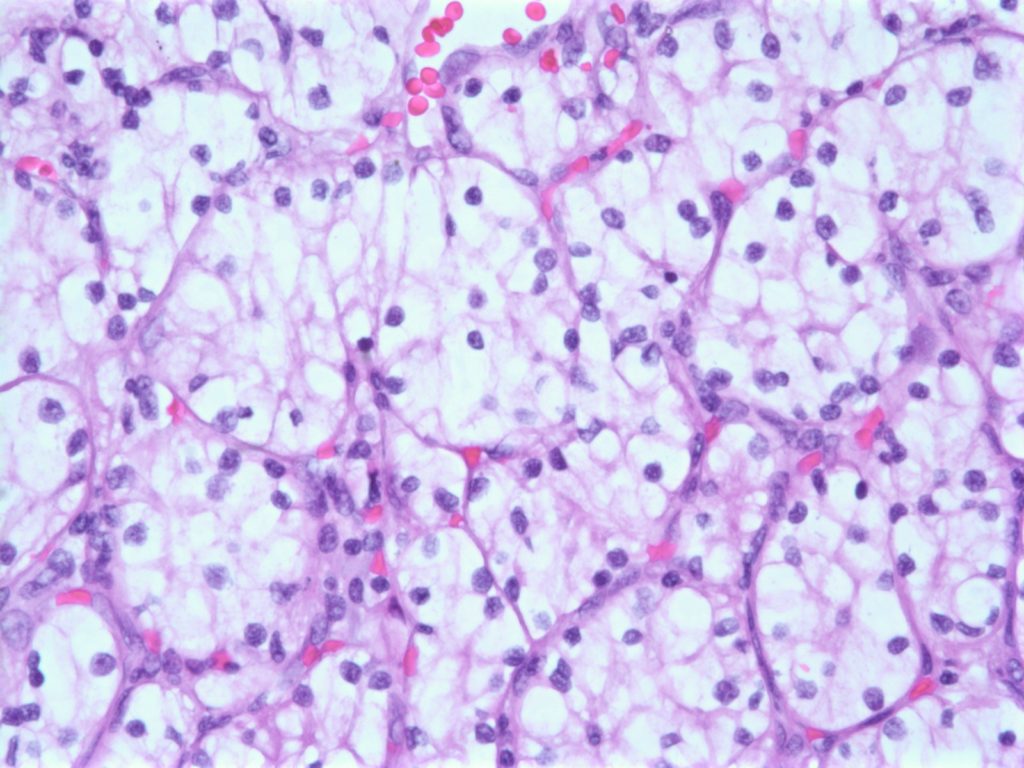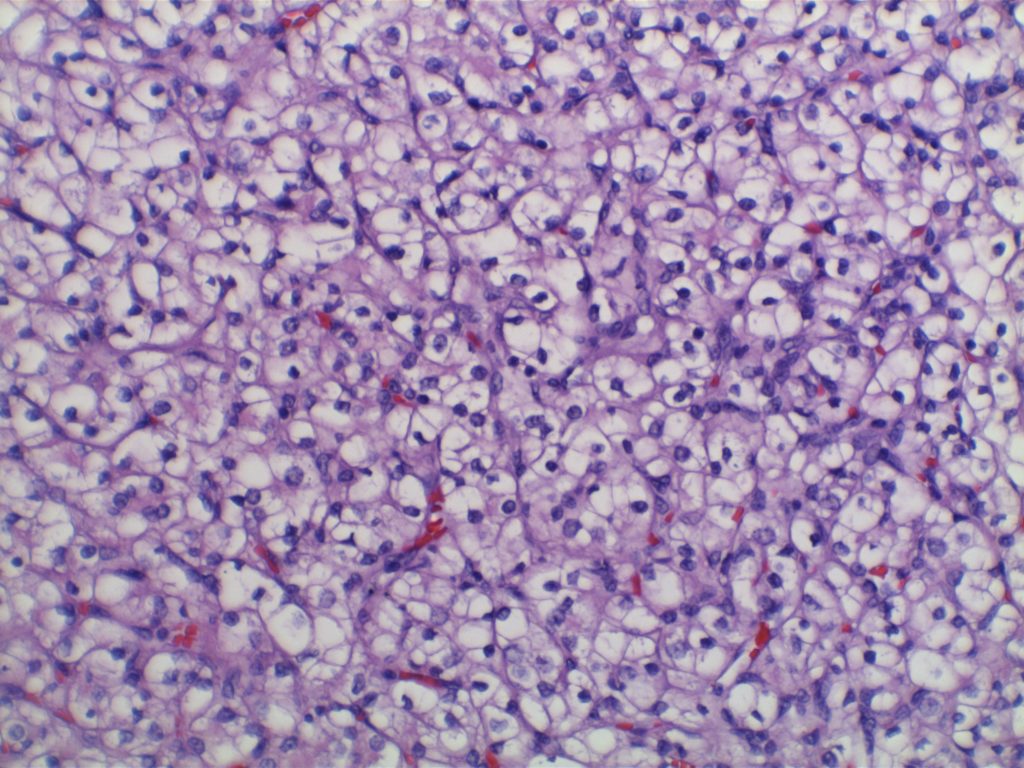Clear cell renal cell carcinoma is the most common malignant renal neoplasm (70–80% of renal cancers). These tumors are associated with a deletion in chromosomes 3p. The von Hippel-Lindau (VHL) gene lies in the deleted region, and is thought to act as a tumor suppressor gene in both the sporadic and familial forms of this tumor. In difficult cases to classify histologically, knowledge of genetic abnormalities within the tumor can be important to sub-classifying renal carcinomas.
Clear cell carcinomas are thought to arise from proximal tubule epithelium. The morphologic pattern is that typically of clear cells (although some areas with eosinophilic change is not uncommon) arranged in varying patterns (solid, trabecular, tubular, or even cystic). The clear cytoplasm is secondary to cytoplasmic accumulation of glycogen and lipids. There is typically not much stroma associated with his these tumors, but vascularization is very prominent. (Robbins, page 953–955)
Photomicrographs


References
Robbins and Cotran Pathologic Basis of Disease. V Kumar, et al. 9th Edition. Elsevier Saunders. 2015.
